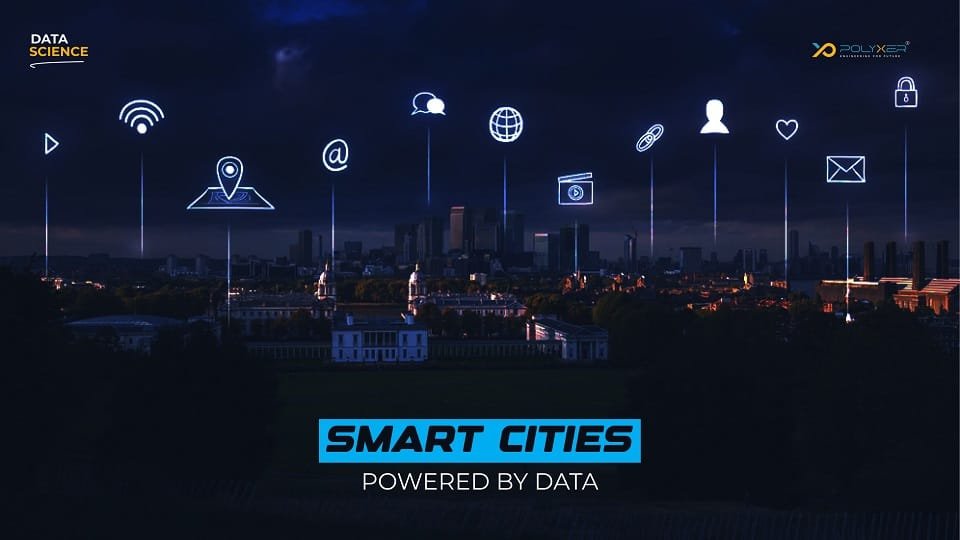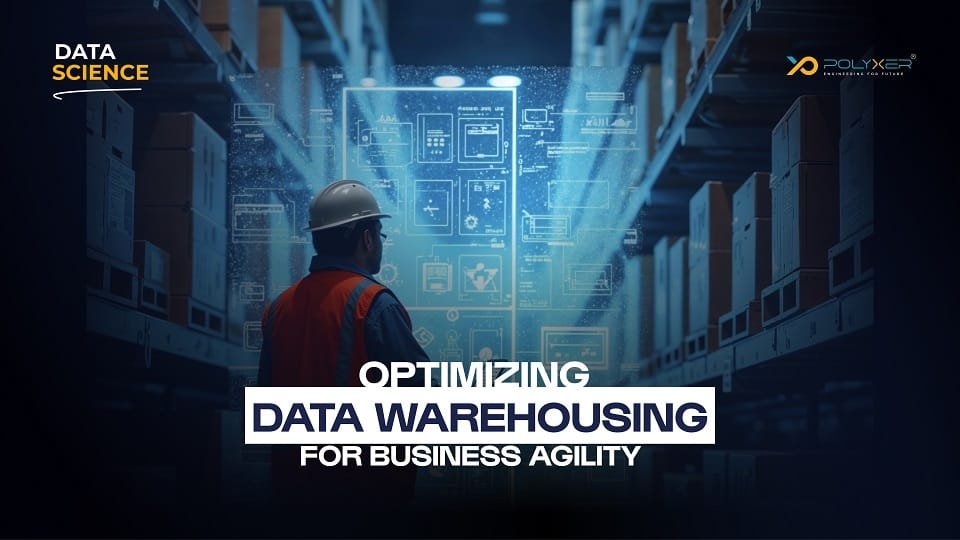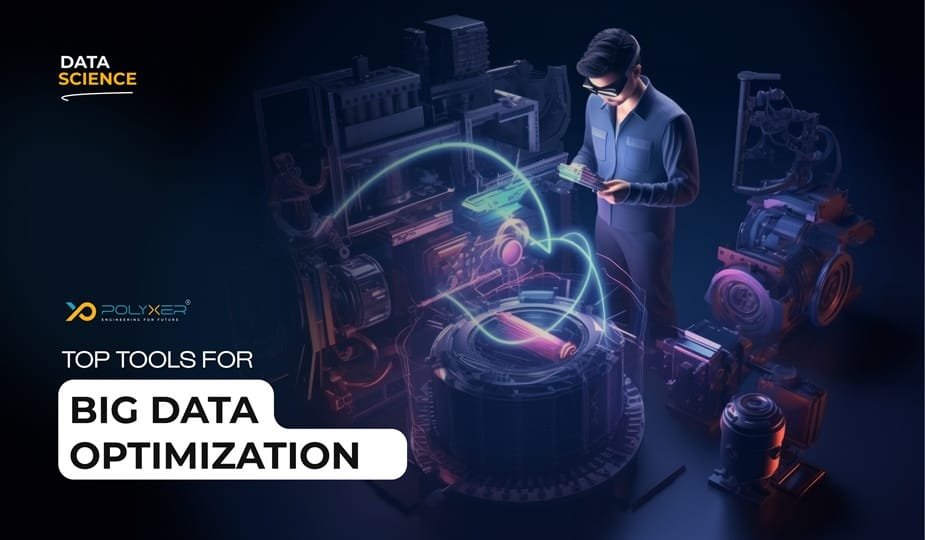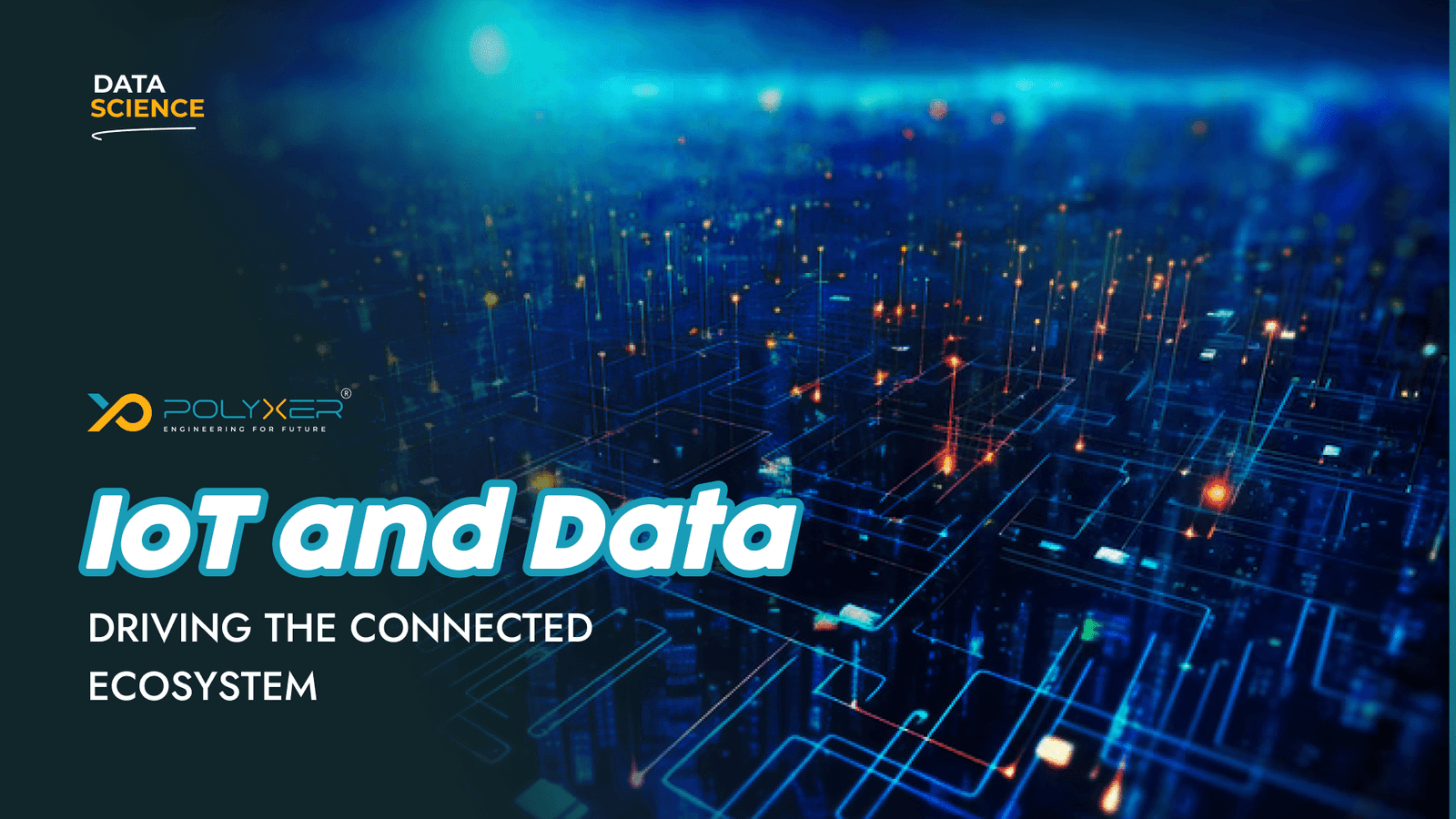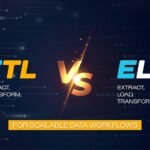
ETL vs ELT for Scalable Data Workflows

Harnessing Business Analytics for Competitive Edge
Urbanization is one of the defined events of our time. More than half of the world's population now lives in cities, a figure is expected to increase by about 70% by 2050, as reported by Sustainable Development Goal. This rapidly presents both urban development opportunities and challenges - from economic growth and innovation to congestion, pollution and resource management. To address these complications, cities around the world are turning to smart city initiatives, leveraging data and digital techniques to create a more efficient, durable and habitable urban environment.
The data is at the center of the smart city revolution. By utilizing real-time and huge amounts of historical data of sensors, infrastructure, citizens, and devices, cities can make informed decisions, take information usage, adapt to resource uses, increase public services, and improve the quality of life for residents. This newsletter explores how smart cities are powered by data, exploring major technologies, applications, challenges and future directions.
The Foundation of Smart Cities: Data and Connectivity
Smart cities rely on seamless collections, transmission and analysis of data to fuel wise decisions. Many basic elements come together to make it possible:
⦁ Internet of Things (IoT)
Urban infrastructure achieves huge streams of data via embedded sensors and connected devices deployed throughout the infrastructure, such as traffic flows, air quality, energy use, waste management and public safety. IoT acts as a sensory network of the city which converts physical locations into data hubs.
⦁ Big Data and Analytics
The huge amounts and diversity of data require advanced analytics tools that are capable of converting raw data into actionable insights. Big data platforms, Artificial Intelligence (AI), and machine learning algorithm patterns, predict trends, and enable active management.
⦁ Connectivity and Network Infrastructure
Strong communication network-such as 5G, fiber optics, and low-power wide-area network (LPWAN) -ensure real-time data transmission and IoT tools, and connectivity between citizens and city management systems.
⦁ Cloud Computing
Cloud platforms provide scalable storage and calculate resources that support data aggregation, processing and sharing in municipal departments and stakeholders.
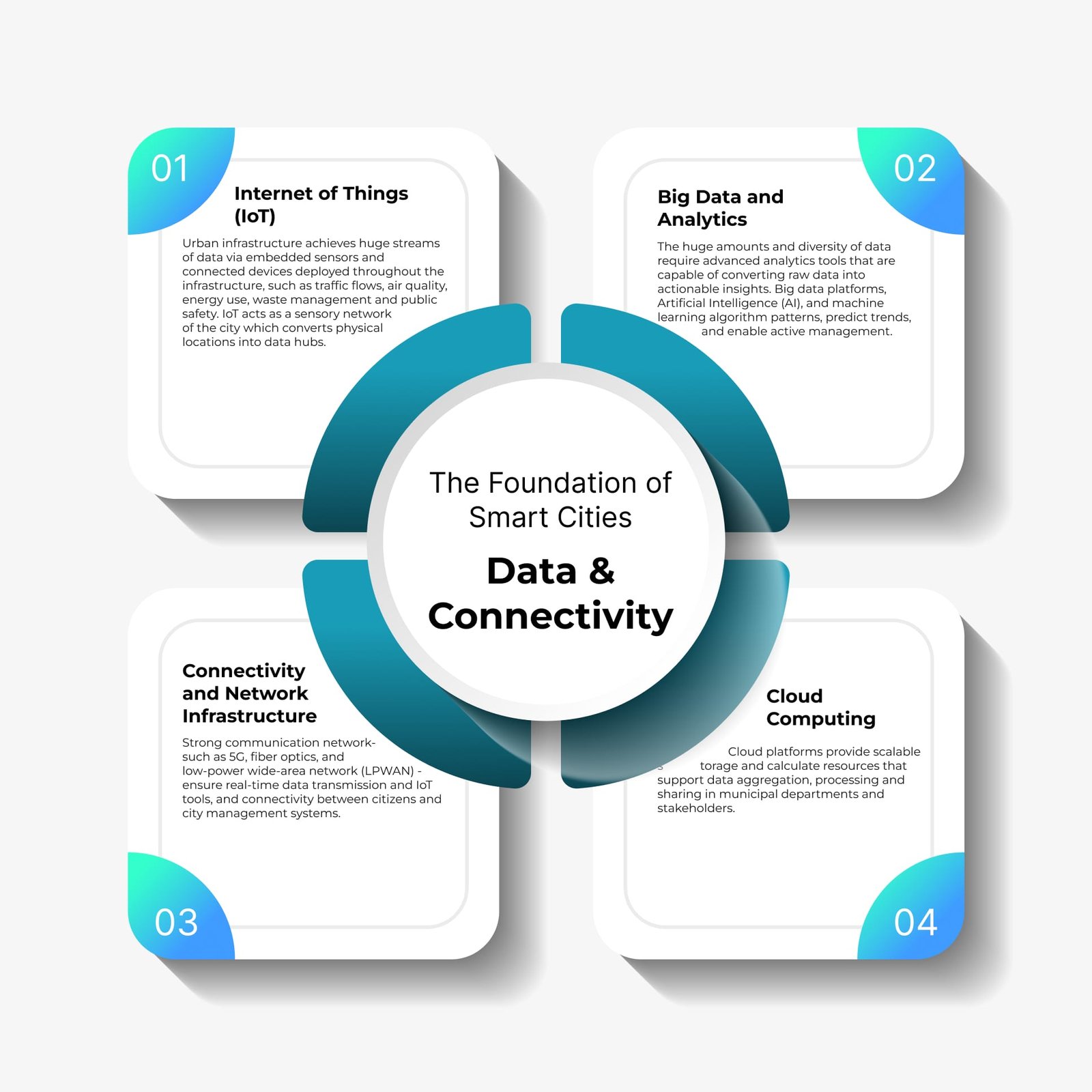
The Foundation of Smart Cities: Data and Connectivity
Key Domains Empowered by Data in Smart Cities
Intelligent Transportation Systems (ITS)
Traffic congestion is a major urban issue that affects productivity and environmental health. Smart city uses data-driven ITS to monitor, manage and adapt with traffic flows:
⦁ Real-Time Traffic Monitoring: Traffic sensors and cameras analyze congestion levels and adjust the traffic light dynamically to improve the flow.
⦁ Predictive Analytics: Analyzing historical and live traffic data helps in predicting congestion hotspots, enabling preemptive measures.
⦁ Public Transit Optimization: Data guides in improving efficient scheduling, routing and real-time passenger information, reliability and user experience.
⦁ Mobility-as-a-Service (MaaS): Integrated platforms allow users to plan uninterrupted multi-model trips using shared bikes, buses, subway and ride hailing services.
Energy Management and Sustainability
Efficient energy use is important to reduce carbon footprints and save cost:
⦁ Smart Grids: The sensors monitor the demand for electricity in real time, which is able to support the load balance and renewable energy integration.
⦁ Building Management: Data drives automatic heating, ventilation and air conditioning (HVAC) systems to optimize energy consumption on the basis of occupancy pattern.
⦁ Street Lighting: Adaptive Lighting System adjusts pedestrians and vehicle movement, balanced visibility with energy savings.
⦁ Environmental Monitoring: Continuous air quality and pollutant tracking policy and public advice to improve urban health.
Public Safety and Emergency Response
Data empowers city officials to protect citizens and respond rapidly to events:
⦁ Surveillance and Analytics: Video analytics and geopolitical data detect suspicious activities and enable crime prevention.
⦁ Predictive Policing: Data-driven models identify high-risk areas and time to allocate law enforcement resources strategically.
⦁ Disaster Management: IoT sensors track environmental parameters such as flood or seismic activity, trigger emergency alerts and coordinated responses.
⦁ Healthcare Response: Data integration enables rapid triage and resource purifications during hospitals and emergency services.
Waste and Water Management
Cities face increasing challenges in waste and water management:
⦁ Smart Waste Bins: Sensors fill the monitor levels, adapt collection routes and schedules, and reduce costs and emissions.
⦁ Water Usage Monitoring: Real time meters identify data leaks, monitor the consumption pattern, and support conservation efforts.
⦁ Pollution Detection: The sensors detect contaminants in water systems and inform the maintenance of the infrastructure.
Citizen Engagement and Governance
Smart city uses data to deepen civil participation and improving governance transparency:
⦁ Open Data Portals: Accessible dataset makes residents, startups and researchers empower to develop innovative solutions.
⦁ Mobile Apps: Platform reporting issues provide services such as paying bills or access to city announcements.
⦁ Participatory Budgeting and Feedback: Data-driven equipment enables citizens to provide inputs on planning and budget, promoting confidence and community participation.
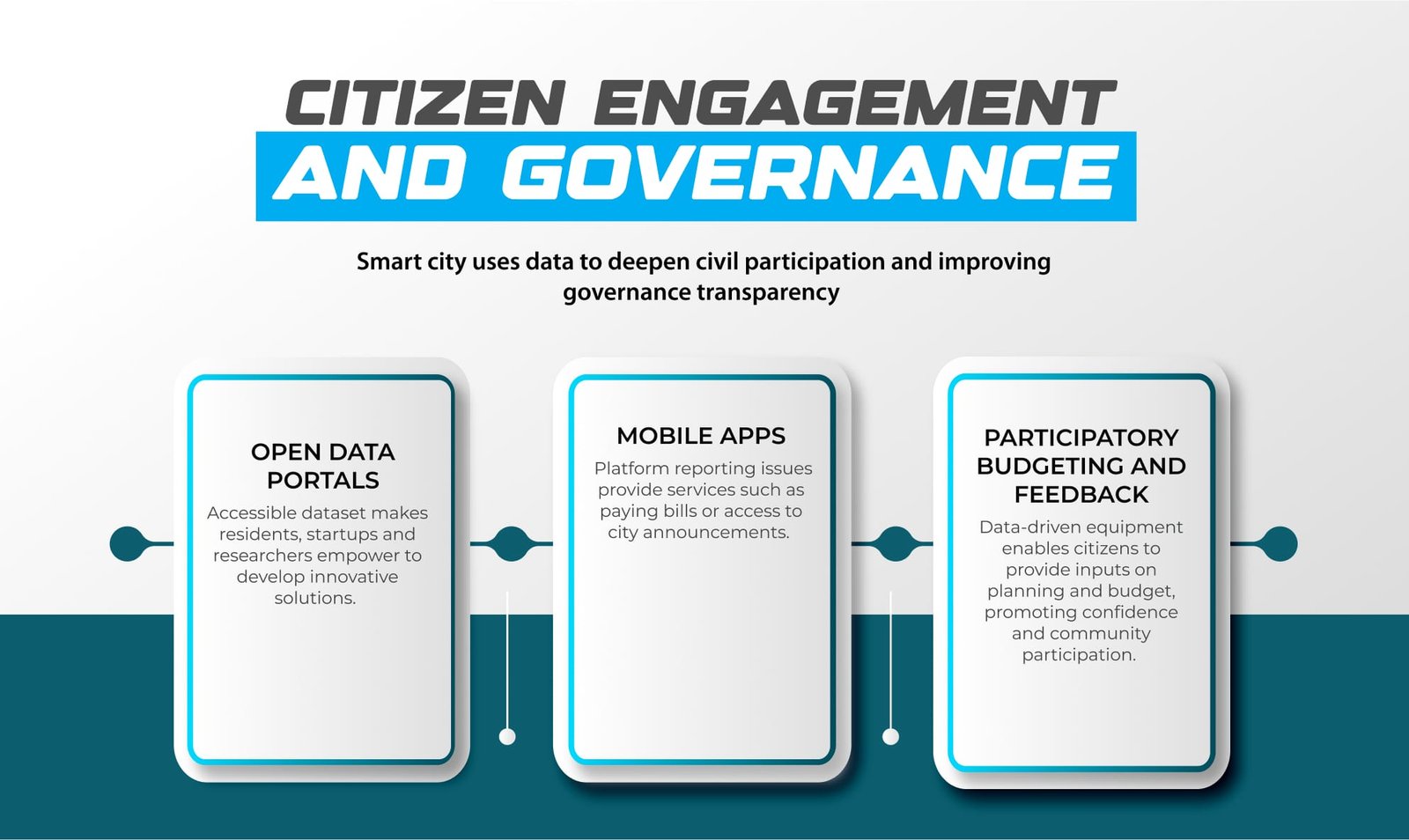
Citizen Engagement and Governance
Technologies Driving Data-Powered Smart Cities
Artificial Intelligence (AI) and Machine Learning (ML)
AI and ML enhance data processing capabilities to automate decision making, adapt resource allocation and offer personalized services.
⦁ Anomaly Detection: AI detects abnormal patterns in traffic or utilities or indications of defects or safety threats.
⦁ Forecasting: ML models predict energy demand, transit riding and environmental events.
⦁ Chatbots and Virtual Assistants: These provide timely support and information to citizens.
Geographic Information Systems (GIS)
GIS integrates spatial data along with other datasets, assists in urban planning, infrastructure development and service distribution.
Blockchain
Blockchain provides safe, transparent transactions records for management, property records, supply chain traceability, and more.
Edge Computing
The processing data near or near the Edge reduces delays and bandwidth use, which enables important real -time reactions important to autonomous vehicles, emergency services and industrial IoTs.
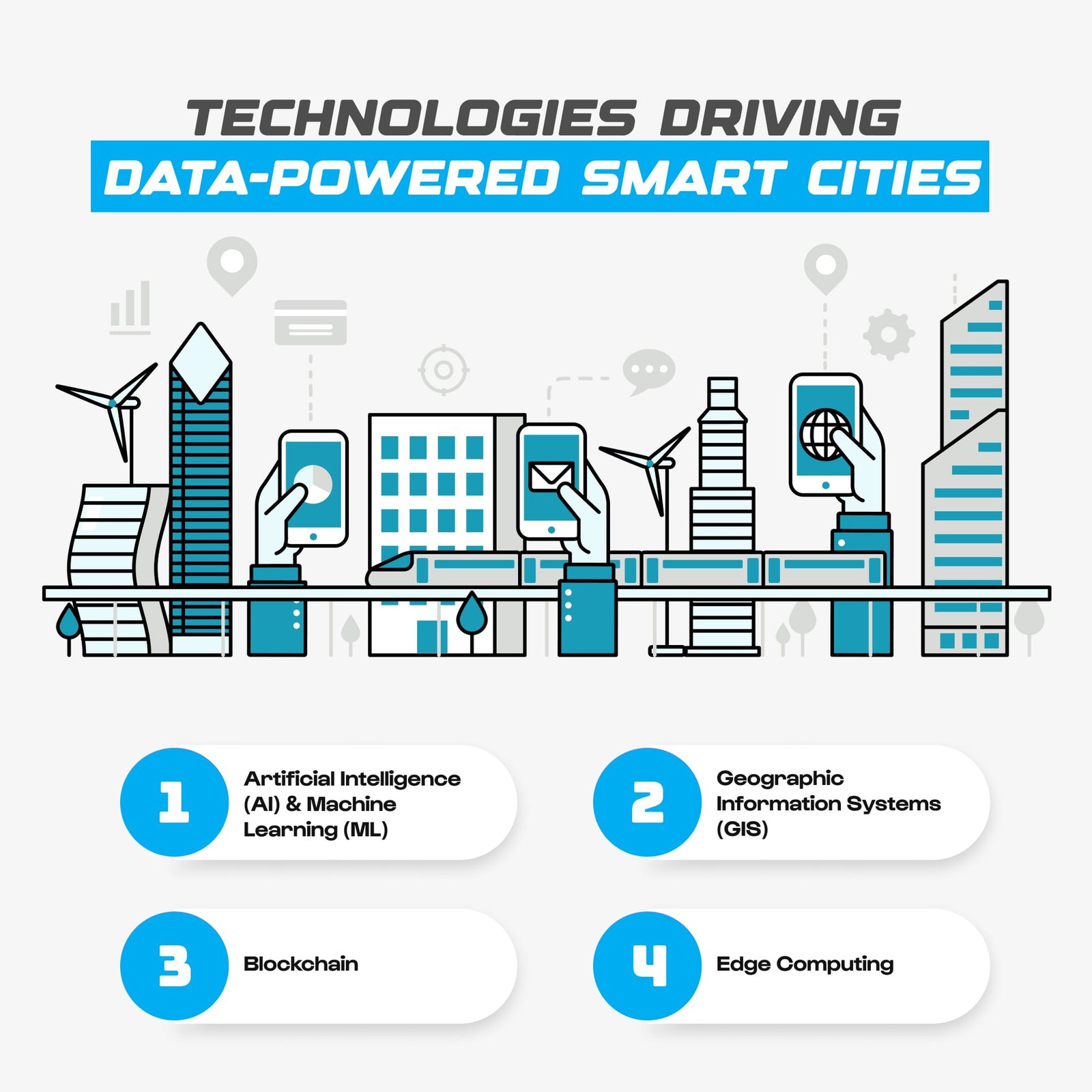
Technologies Driving Data-Powered Smart Cities
Challenges in Implementing Data-Driven Smart Cities
Data Privacy and Security
Collecting comprehensive data increases concerns about monitoring, personal privacy and potential misuse. It is important to ensure data neutralization, strong cyber security measures and transparent data use policies.
Interoperability and Standards
Smart city systems come from multiple vendors and technologies. It is necessary to obtain the difference through open standards and integration framework to avoid silos and maximize data utility.
Infrastructure and Cost
The deployment and maintenance of IoT sensors, networks, and cloud infrastructure are an important investment. Cities should balance innovation along with budget and seek public-private partnership.
Data Quality and Governance
Reliable decision-making depends on accurate, timely and full data. It is important to install a data governance framework covering data ownership, quality control and ethical use.
Citizen Inclusion
Ensuring similar access to smart city benefits demands addressing digital division and include diverse communities in planning and decision making.
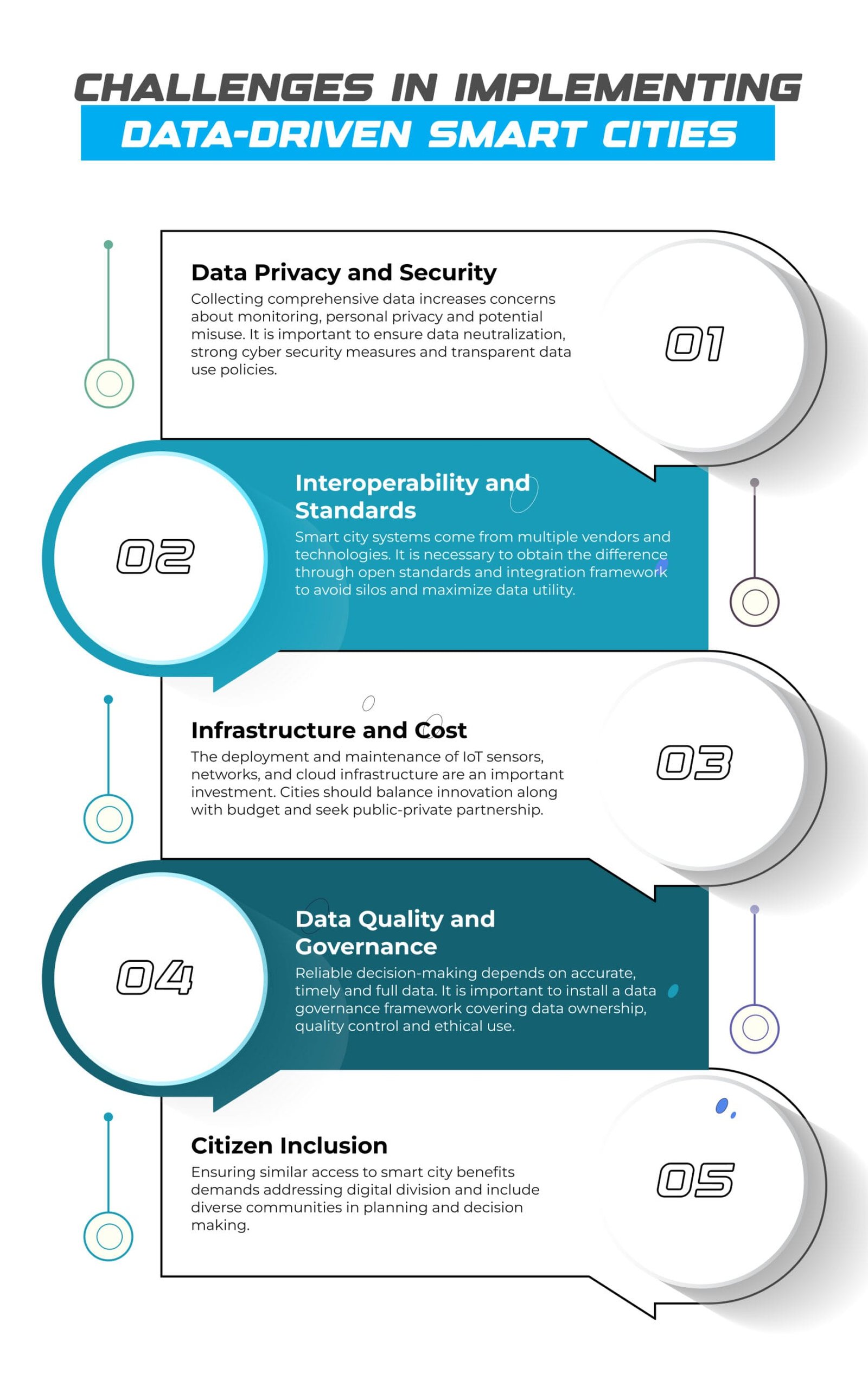
Challenges in Implementing Data-Driven Smart Cities
Real-Life Examples of Smart Cities Powered by Data
Barcelona, Spain
Barcelona is a leading smart city that leverages AI for IoT sensor, open data and urban management:
⦁ The smart lighting system has saved energy costs by adjusting the brightness based on pedestrian appearance.
⦁ Traffic flows are adapted using real -time data from the camera and sensor, reducing congestion.
⦁ Citizens who use mobile applications promote engagement and streamline municipal services.
⦁ Integrated environmental sensors monitor air quality which supports health initiatives.
Singapore
Singapore's Smart Nation initiative uses comprehensive data collections and analytics to enhance the life of the city:
⦁ The city uses the future AI to optimize the public transport program based on passenger flow data.
⦁ The sensors in water management systems immediately detect leaks and contamination, conserving resources.
⦁ The open data of the government encourages innovation with a dataset for researchers and developers.
⦁ Data-driven public safety systems improve emergency response time and prevention of crime.
The Future of Data-Driven Smart Cities
Emerging trends will change smart cities further:
⦁ 5G Deployment: Ultra-fast network will enable large-scale IoT device connectivity and real-time data processing.
⦁ Digital Twins: Virtual replicas of cities will follow landscapes to adapt urban planning and disaster preparations.
⦁ Sustainability Focus: Data will promote climate-flexible infrastructure and circular economy initiative.
⦁ Personalized Urban Services: AI will enable customized citizen experiences in transportation, healthcare and civil participation.
⦁ Collaborative Urban Ecosystems: Public, private and civic areas will cooperate closely, share data and create solutions.
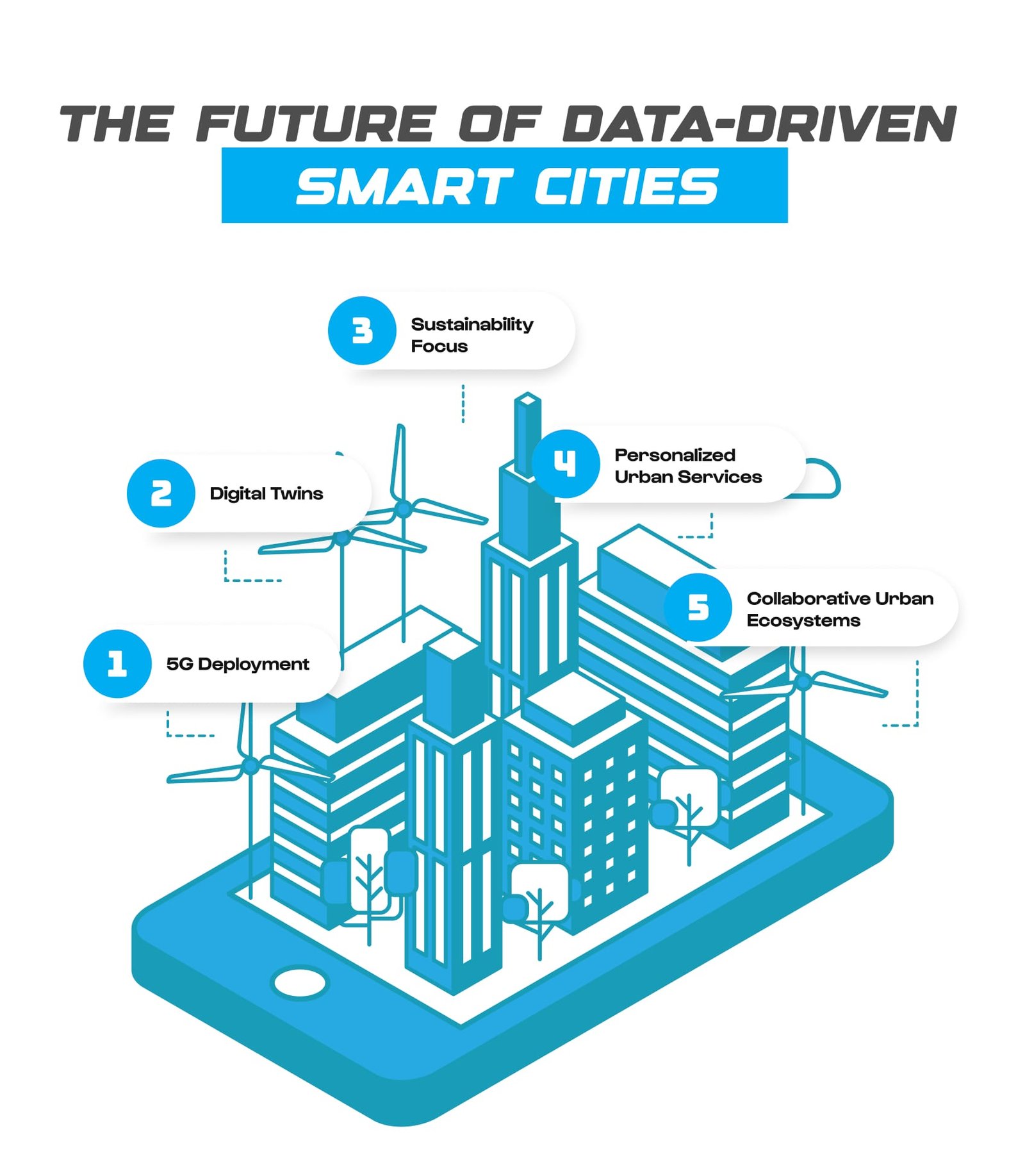
The Future of Data-Driven Smart Cities
Wrapping Up
The role of data to power smart cities is bringing revolution in urban life by enabling smart decisions, efficient resource uses and more responsible services. While challenges will be there regarding privacy, equity and integration, however, the transformational ability of data-managed cities is undisputed.
Cities can use data to create a strong infrastructure, promote innovation and prioritize citizens well, to create durable, inclusive and vibrant urban atmosphere. Empowerment by data, future cities will not be smart only-they will be the flexible centers of opportunity for their communities. Hence, smart cities will be truly human centered.
Utilizing data for building smart cities is not just a technical trend; It is a roadmap towards better quality of life for further generations. This journey requires vision, cooperation, and commitment - cities around the world are already combining to improve urban life.
This Article is also here



